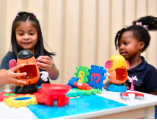In early childhood education, the concept of nurturing the whole child has become a guiding philosophy. This approach recognizes that children are not only learners but also emotional, social, and physical beings. By focusing on all aspects of development, educators can create a balanced environment where young learners thrive.
What Does It Mean to Nurture the Whole Child?
Nurturing the whole child involves supporting every area of a child’s growth—cognitive, emotional, physical, and social. Rather than focusing solely on academic milestones, educators aim to create a well-rounded foundation that supports curiosity, confidence, and resilience.
Emotional Well-being Matters
A child’s ability to manage emotions, express feelings, and cope with challenges plays a crucial role in their learning experience. Early childhood programs that encourage emotional expression—through art, storytelling, or calm-down corners—help children build self-awareness and empathy from a young age.
Building Strong Social Connections
Young children learn best in environments where they feel connected. Opportunities for peer interaction, collaborative play, and group discussions help children develop communication skills and a sense of community. These social experiences foster cooperation and respect for others.
Supporting Physical Development
Physical activity supports both health and learning. Activities like dancing, outdoor exploration, and hands-on manipulation of materials build motor skills and coordination. Movement-rich environments also enhance focus and reduce stress.
Encouraging Curiosity and Creativity
A well-rounded learning environment sparks imagination and inquiry. When children are encouraged to ask questions, explore materials, and experiment with new ideas, they develop critical thinking and problem-solving skills. Nurturing curiosity makes learning joyful and engaging.
The Role of Caring Adults
Educators play a vital role in nurturing the whole child. Warm, responsive relationships help children feel safe and understood. When teachers listen with empathy, celebrate individual progress, and offer gentle guidance, they build trust and promote self-esteem.
Creating a Balanced Learning Environment
A classroom that nurtures the whole child includes a variety of spaces and materials—quiet reading nooks, open-ended art supplies, sensory stations, and nature elements. These choices reflect a respect for each child’s unique learning style and developmental needs.
Final Thoughts
Nurturing the whole child in early learning isn’t about doing more—it’s about being intentional. By valuing emotional health, physical activity, creativity, and social connection alongside academics, educators help children grow into confident and capable learners. This balanced approach lays the groundwork for lifelong well-being and success.


